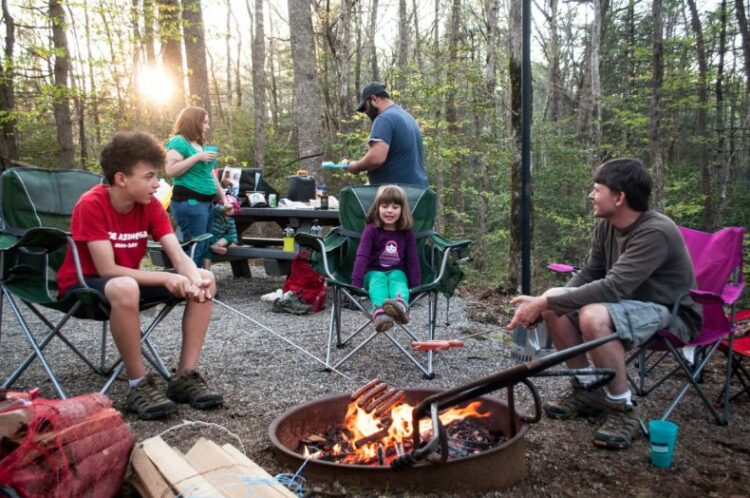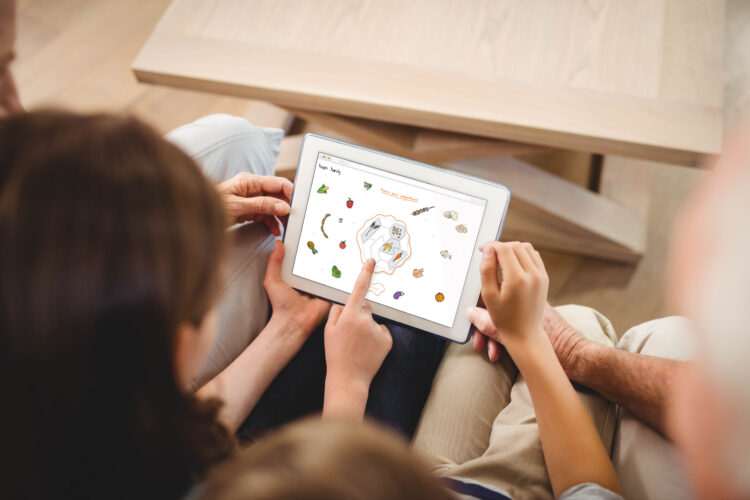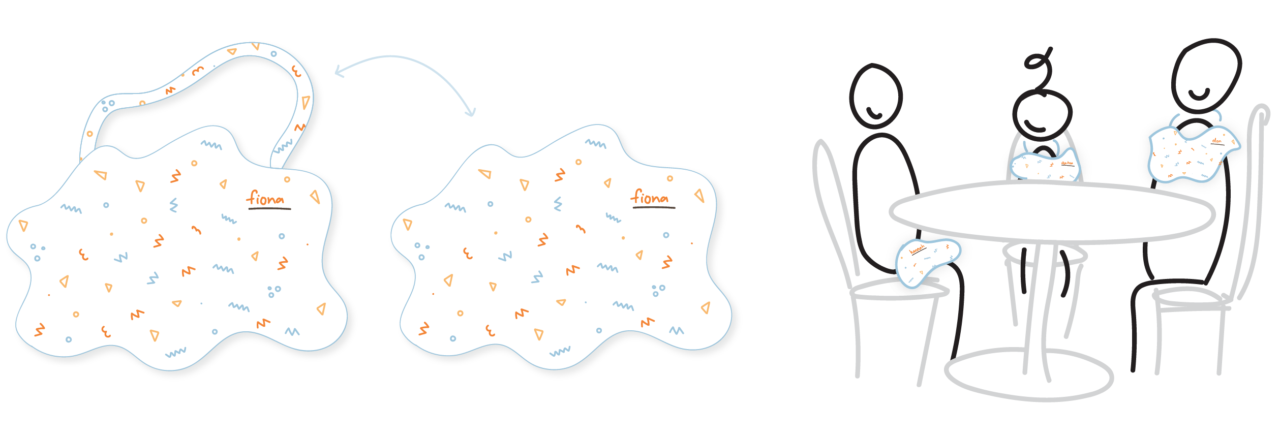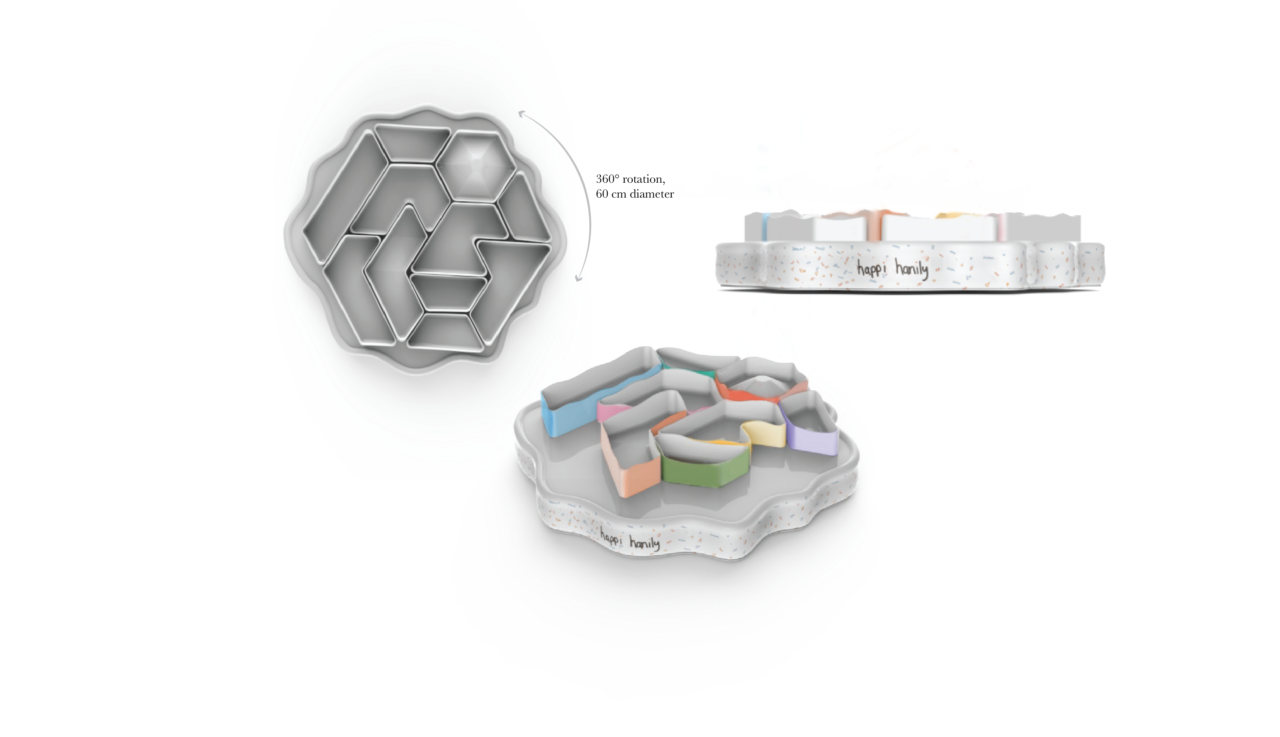Designing for healthy eating behaviour
Project by Hannah Goss
Supervised by Rick Schifferstein and Marise Schot
Childhood obesity is globally one of the most severe life concerns of the 21st century (WHO, n.d.). Childhood obesity not only increases the risk of obesity in adulthood, but also presents numerous psychological effects for obese children, including lower self-esteem, social problems, and peer relationships, to name a few (Huffman, Kanikireddy, & Patel, 2010). With the prevalence of obesity increasing, the healthy patterns developed in the first years of life are becoming more critical. In her project, Hannah Goss wanted children to feel free, safe, and empowered to develop a healthy relationship with food by facilitating a harmonious family interaction during dinnertime. She wanted an experience that felt like going on an annual family camping trip; characterized by playful exploration, guided independence, and trusted relationships.

After a literature review and interviews with experts and parents she gained a deeper understanding of the values, beliefs, and experiences in the home-food context. She gathered and categorized insights based on their ability to shed light on what family interactions around food moments will look like in 2025. For example, two insights are:
- Parents struggle to set clear boundaries; they often sacrifice their own well-being in order to be more engaged in their children’s lives.
- Most families are child-centred where the children hold priority over their parent’s time, energy, and attention. When reviewing the insights, Hannah found the need for flexibility was a surprising yet important concept.
She continued her process by designing and testing a series of interventions to identify how design can positively influence our relationship with food. The design interventions were inspired by the themes of rebellious play, mindful eating, and the promotion of playful exploration, guided independence, trusted relationships, and family harmony.
Her final concept is called Happi Hanily. Happi Hanily is a family food play experience that facilitates the reflection of family food values, supports mindful eating, and creates an atmosphere that fosters harmony amongst the family, promoting healthy eating behaviour for every family member over time. The concept supports families in coming together for one harmonious experience that can be adopted as a dinnertime ritual over time. Rituals are repeated and meaningful activities that provide families with a sense of belonging, transfer family values, and provide a sense of continuity across generations. Similar to the metaphor of a family camping trip, Happi Hanily focuses on the qualities of playful exploration, trusted relationships, and guided independence and can be enjoyed by the whole family.
The design has three elements:
- The digital Food Finder (an online recipe platform)
- The Spill Supporters (customized napkins)
- The Wackey Wavey Wheel of Food (central serving and eating dish).
Digital Food Finder
The food finder is a personalized platform that offers families inspiration, guidance, and exploration in preparing for the family’s dinner. The design of the platform is interactive and engaging for the whole family. By selecting ingredients, a recipe is recommended to you. The ingredients to choose from change weekly, based on what is in season near you, so there are always new combinations to discover. Once you find a recipe, you can watch a video from the person who created it. Learn why it is meaningful to them and perhaps be triggered to reflect on your own experiences and food values. Through this platform, you are connected to other families, cultures, and foods. It stimulates children to explore various foods and food-related stimulation (texture, colour, flavour). Other features include adding your own videos and pictures to the recipes you have already tried and uploading your own meaningful recipes. The Food Finder is a step towards creating a family recipe book that can be passed down through generations and can be shared with others you love.

The Spill Supporters
Flexibility in the meal is a key element of Happi Hanily. To encourage messy exploration during the meal, while protecting clothes and offering a way to wipe dirty hands, over-sized convertible napkins are included. Each cloth napkin is uniquely shaped and embroidered with a name of your family member. This personalization increases the feelings of belonging, individuality, and importance. The napkin can be folded and tucked into your shirt, placed on your lap, or worn as a bib. This flexibility gives family members a sense of control over their eating experience. While each family member has the freedom to choose how to use the napkin, if the meal is very messy the recipe will recommend the napkin be worn as a bib. It is a practical and encouraging solution when exploring foods with your hands.

Wackey Wavey Wheel
Portions sizes and plates often go hand in hand. Therefore, Happi Hanily encourages a more mindful eating experience and does not include pre-determined portion sizes. Instead, everyone is encouraged to reflect on their satiety before reaching for another mouthful. By having more autonomy over food choices, the pressure to finish what you are served is removed and everyone can control what and the quantity of food they eat. Eating with your hands also slows the speed of consumption, which helps with digestion and the feeling of fullness. The dish enables a communal eating experience, and the design offers autonomy and control over food choices in a more explorative and playful way than traditionally experienced while eating.
To prepare for dinner, you first assemble the Wackey Wavey Wheel. With 11 different sizes and shapes you can adapt the dish to suit the needs of your meal. The dishes are colour coded to help with assembly and serve as both your individual eating surface and the area to place your food for the meal. Fill as many or as few of the dishes with food as you would like. Throughout the meal take what you please and combine different ingredients to explore new flavour experiences. The separated food stimulates more exploration of how to pair food choices throughout the meal.
Another feature is the ability to turn the base 360 degrees. This allows family members to face certain dishes towards themselves, or perhaps move dishes away from others. This also means that everyone is more aware of what other family members are reaching for. In this way everyone is encouraged to be mindful of their own satiety and eating experience, and of those around them.

References
- Huffman, F. G., Kanikireddy, S., & Patel, M. (2010). Parenthood-A Contributing Factor to Childhood Obesity. International Journal of Environmental Research and Public Health, 2800-2810.
- World Health Organization. (n.d.). Childhood overweight and obesity. Retrieved from Global Strategy on Diet, Physical Activity and Health: https://www.who.int/ dietphysicalactivity/childhood/en/
Want to read more about this project?
Download Hannah’s report.
